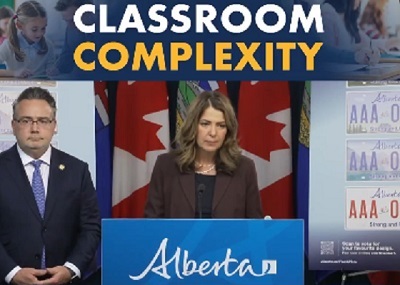COVID-19
Pandemic: We need to be smarter than China (and Italy)

**This article has been amended in light of the ongoing situation in Italy. It was originally posted to dredles.com.

Dr J Edward Les is a Pediatric Emergency Physician practicing in Calgary.
In the winter of 2017 two 17-year-olds with a 3-D printer created a little spinny thingy called the Fidget360 and promoted it on social media.
Fidget spinners quickly went viral. And because there was no patent, dozens of companies hurried to produce knockoffs.
By May of 2017 the little gadgets accounted for 17% of all online toy sales and had spun their way into every nook and cranny of the globe. Every kid I tended to in the emergency department of my hospital was spinning one of the plastic gizmos—and more often than not, so were their parents.
But then—just as quickly as it started—it was over. By September of 2017 fidget spinners had vanished, consigned to trash bins and forgotten corners of toy rooms and closets.
There’s a word we use to describe this sort of phenomenon, where something spreads quickly throughout an entire country, continent, or the whole world and affects an exceptionally high proportion of the population before burning itself out.
That word is pandemic, of course. We use it to describe massive outbreaks of disease, typically, not outbreaks of fidget spinners.
It’s a scary term—one that conjures up images of the Spanish flu, which wiped out up to 100 million people in 1918 (five percent of the world’s population); or of the bubonic plague, which ravaged the globe in the 14th century, killing half of Europe’s people and knocking the world population down to 350 million from 475 million.
Not all pandemics are as lethal as the Black Death or the Spanish flu, mind you. The H1N1 influenza pandemic of 2009, for instance, killed approximately half a million people—a big number, but roughly on par with the death toll extracted by the seasonal flu each year.
Another pandemic—COVID-19—now threatens the world. This time the viral assassin is a novel coronavirus that originated in China.
How much danger we are in remains a matter of intense debate. Death toll predictions run the gamut from the ridiculous to the obtuse, from epic eradication of mankind on the scale imagined by novelist Stephen King in The Stand, all the way to: “Nothing to see here, folks, keep calm and carry on.”
Rampant misinformation, relentless spin, and wacky thinking amplified by social media hasn’t brought clarity, suffice it say. U.S. President Donald Trump labeled the coronavirus a Democratic conspiracy. Paranoid wing-nuts blather on about Chinese bioweapons. Some people blame a vengeful God; others warn shrilly (and wrongly) of the risk of mail from China or of the danger of eating in Chinese restaurants.
I wrote about the coronavirus outbreak on February 20, seemingly an eternity ago. At the time I wasn’t overly stressed—just a bit fidgety. Twelve thousand people were infected and 250 were dead, pretty much all in the epicentre of Hubei province in China; but it seemed like a drop in the viral bucket compared to the seasonal flu, which takes out up to 600,000 people globally per year.
Plus, after initially dismissing the virus as a threat, the Chinese had reacted with unprecedented measures, locking down Wuhan and a slew of other cities, cordoning off Hubei province, shutting down mass transit, closing airports, and confining 60 million people to their homes—berating those who dared to venture outside with government drones.
It seems to have worked for the Chinese. Epidemiologic data show that the virus continued to spread post-lockdown, but primarily among families already infected pre-quarantine. Community spread was stopped in its tracks.
The number of cases in Hubei province ultimately crested at around 67,000, with 2900 dead. (Just a smattering of new cases are being reported.)
By the time the Chinese instituted their draconian quarantine measures, of course, the viral dandelion had gone to seed: infectious spores of coronavirus had already blown around the world.
Still, the worst-case scenario for Canada, I surmised, surely couldn’t be worse than what Hubei endured.
Applying Hubei’s experience—a population infection rate in that province of only 0.11% (67,000 divided by 60 million) and a case fatality rate of 4.3%— to Canada’s population of 37 million would mean roughly 41,000 cases and 1750 dead in Canada.
Bad enough—but seasonal influenza kills 3500 Canadians every year; traffic accidents kill 2000 people.
So not a huge deal, right?
But here’s the problem: Canada is not China. Neither is the U.S., or any of the other countries where coronaviral spores have taken root.
In one sense, at least, that’s a good thing: our air is much cleaner, and far fewer of us smoke cigarettes, leaving us with lungs presumably less hospitable to invading coronavirus.
However, we are not going to quarantine entire Canadian cities and provinces (it’s too late for that now anyway).
We’re not likely to close airports and shut down mass transit.
We’re not going to chase our citizens with drones.
We’re not going to mandate that entire city populations stay in their houses for weeks or months on end.
And we’re not likely to be as good at keeping infected patients alive—not because we lack the know-how, but because we lack adequate space, supplies, ventilators, and personnel.
The WHO’s Bruce Aylward, commenting on the case fatality rate observed in China, had this to say about the regime’s efforts:
“That’s the mortality in China — and they find cases fast, get them isolated, in treatment, and supported early. Second thing they do is ventilate dozens in the average hospital; they use extracorporeal membrane oxygenation (removing blood from a person’s body and oxygenating their red blood cells) when ventilation doesn’t work. This is sophisticated health care. They have a survival rate for this disease I would not extrapolate to the rest of the world. What you’ve seen in Italy and Iran is that a lot of people are dying.”
Canada may do better than Italy and Iran. But our hospitals are already stuffed to the gills (and people won’t stop suffering from heart attacks and strokes and trauma and cancer just because COVID-19 is kicking around).
We can’t, like the Chinese, build enormous hospitals almost overnight specifically for coronavirus patients. (We can’t even build a pipeline in this country.)
Does all of the above mean we’re screwed?
Not at all.
Certainly, we can’t do what the Chinese did. Nor should we try. The Italians are trying, and their country is descending into unmitigated chaos.
We must adopt a radically different strategy.
First, we must acknowledge that stopping this virus is like trying to stop the wind.
We must acknowledge what any seasoned epidemiologist can tell you: viral pandemics burn themselves out—but only after millions of people get sick and recover, freshly equipped with powerful antibodies to the virus. The resulting collective population immunity—called herd immunity—prevents the virus from hopping from person to person to person with epidemic speed, and the pandemic dies out.
There are no other options. Well, there are two, but neither are on the near horizon: complete eradication of the virus (as mankind did with smallpox), or the development of an effective vaccine.
We must let this pandemic burn itself out.
But just as importantly we must control how that happens.
The novel coronavirus has an R0 value of 2.2, which means that each person can infect 2.2 others. The case fatality rate across all of China was 2.3% (it’s higher in Wubei province and outside of China—it’s over 4% in Italy, for example). Those numbers, ominously, aren’t much different from the Spanish flu.
Knowing that most of the world cannot replicate China’s totalitarian lockdown to control viral spread, epidemiologists estimate that between 30-60% of the world could end up infected with coronavirus.
Wait a minute, you say: Hubei province had a population infection rate of only 0.11%. That’s a far cry from 30%.
Sure. But the Asian elephant in the room is that China, by its draconian quarantine measures, prevented community spread—which also very likely prevented the development of herd immunity.
When Wuhan and her 15 sister cities are re-opened; when the stranglehold on Hubei province is released; when the airports re-open and the trains start running and commerce restarts: we may see a second wave of infection in China. The virus is not gone, and because the Chinese prevented community spread from continuing for two months, most of their population is probably not immune.
It was the second wave of the Spanish flu, remember, that killed most of the people in that pandemic. And China could be on the cusp of a second wave of COVID-19.
We must not allow this to happen globally with COVID-19.
If epidemiologists are correct even at the low end of their estimates—30% of the world’s population infected and a case fatality rate (also at the low end) of 2.3%—that means 53 million dead: roughly 255,000 of them in Canada (73 times the death toll of the seasonal flu).
Horrific stuff. But the achilles heel of the coronavirus is that it primarily kills old people. And we can exploit that.
The Spanish flu killed across demographics, disproportionately killing those in the age categories of 20 to 40, over 65, and younger than five. The high mortality in healthy people was a unique feature of this pandemic – as was the case with the 2009 H1N1 pandemic.
But that’s not the case with COVID-19: it kills mostly the elderly and the infirm. The mortality rate in those over 80 is 15%; in those over 70, eight percent; and in those over 60 it’s just under four percent. In Italy, where the death toll stood at 366 as of Sunday, the average age of those who have died is 81.
At younger ages the mortality rate drops off dramatically – the vast majority of younger people, especially kids, recover without incident, most of them with mild or no signs of illness.
But—and this is key—even though children (and healthy adults) may be completely symptomatic or have only mild symptoms after they acquire coronavirus, they still carry the virus: they are vectors, much like the rats that spread the bubonic plague in the 14thcentury.
We are not going to exterminate the children as we did the rats—but we can take real steps to mitigate the risk of viral spread.
Those most vulnerable to the deadly effects of this virus—the elderly and the medically compromised—should self-quarantine while we judiciously allow the virus to do what it does among the rest of us.
That means that we all continue to protect ourselves sensibly, just as we do from the flu: wash our hands, cough into our elbows, stay home if we are sick, learn the “Ebola handshake”, and stay away from hospitals and clinics unless truly necessary.
In an earlier version of this piece I wrote: “We must not close the schools, the airports, the theatres, the restaurants.”
I’m no longer so sure.
This is a fast-moving epidemic, and it is imperative—imperative—that we pay close attention to what is happening elsewhere as this virus marches around the world.
Reports out of Italy are deeply sobering: the elderly are dying, and they are sickening at a furious rate. Hospital resources have been completely overwhelmed.
The Italians were utterly unprepared for the sheer volume of critically ill patients requiring intensive care all at once.
And so is Canada.
We need to slow the virus down. We need to impede the rate of its spread to the elderly.
It may be prudent, as COVID-19 establishes a foothold in Canada. to proactively close schools and universities, and to cancel concerts and conferences and other mass gatherings.
Messaging is key. School closures should not incite fear and alarm. The risk to the young and healthy remains very low—whether or not we close schools and cancel concerts doesn’t change that.
But we must do whatever we can to slow the dissemination of virus to the elderly and medically compromised, to as much as possible lessen the strain on our health care resources.
It is far easier for hospitals to deal with a crush of infected, critically ill patients over a four month period than over a four weekperiod.
We must, in the language of disease, “flatten the epidemiologic curve”.
We must sequester the elderly and the medically compromised away from the rest of the population. They should avoid crowds, travel, and children—likely until August or later.
We cannot do this by decree—that will never work. But we must shout this message of self-quarantine from the rooftops loudly and repeatedly so that the elderly and medically compromised understand that if they do not comply, they stand a high risk of dying.
At the same time, it is essential that we protect heath care workers and those who are medically at-risk in hospitals: we must enact systems of external triage (a.k.a. drive-through emergency medicine), external treatment sites, telemedicine, mobile treatment teams, and so on.
These measures are critical to to lessen the coming unprecedented demands on our health care system, to reduce the death rate and to buy time until we either have herd immunity or an effective vaccine.
Our politicians and medical leaders have dropped the ball on this. They’ve been fidgeting while this virus burns, spinning confused and garbled messages of half measures and wrong measures.
It’s time to stop the fidgeting, to do away with the spin, and to lead with strength and clarity.
We must not allow the world to succumb to chaos.
We must not allow the economic infrastructure of the world to be destroyed, and society completely upended, by a viral pandemic that targets primarily the elderly and medically compromised.
There is no need to panic.
We should remain calm and carry on.
But nor should we keep our head in the sand.
As Bruce Aylward put it:
“Get organized, get educated, and get working.”
COVID-19
The Trials of Liberty: What the Truckers Taught Canada About Power and Protest

Half the country still believes the convoy was a menace; the other half thinks it was a mirror that showed how fragile our freedoms had become.
This Thanksgiving I am grateful for many things. The truckers who stood up to injustice are among them.
When the first rigs rolled toward Ottawa in January 2022, the air was sharp, but not as sharp as the mood of the men and women behind the wheels. They were not radicals. Seeing a CBC a campaign of disinformation about them begin as soon as their trek started, even when Ottawa political operatives hadn’t yet heard, I started following several of them on their social media.
They were truckers, small business owners, independent contractors, and working Canadians who had spent two years hauling the essentials that kept a paralyzed nation alive. They were the same people politicians, including Prime Minister Trudeau, had called “heroes” in 2020. By 2022, they had become “threats.”
The Freedom Convoy was born from exhaustion with naked hypocrisy. The federal government that praised them for risking exposure on the road now barred the unvaccinated from crossing borders or even earning a living. Many in provincial governments cheered Ottawa on. The same officials who flew to foreign conferences maskless or sat in private terraces to dine, let’s recall, still forced toddlers to wear masks in daycare. Public servants worked from home while police fined citizens for walking in parks.
These contradictions were not trivial; they were models of tyrannical rule. They told ordinary people that rules were for the ruled, not for rulers.
By late 2021, Canada’s pandemic response had hardened into a hysterical moral regime. Compliance became a measure of virtue, not prudence. Citizens who questioned the mandates were mocked as conspiracy theorists. Those who questioned vaccine efficacy were treated as fools; those who refused vaccination were treated as contagious heretics. Even science was no longer scientific. When data showed that vaccines did not prevent transmission, officials changed definitions instead of policies. The regime confused authority with truth. One former provincial premier just this week was still hailing the miracle of “life-saving” COVID vaccines.
For truckers, the breaking point came with the federal vaccine mandate for cross-border transport. Many had already complied with provincial rules and workplace testing. Others had recovered from COVID and had natural immunity that the government refused to recognize. To them, the new rule was not about safety; it was about humiliation. It said, “Obey, or you are unfit to work.”
So they drove.
Donna Laframboise, one of the rare journalists who works for citizens instead of sponsors, described the convoy in her book Thank You, Truckers! with gratitude and awe. She saw not a mob but a moral statement. She showcased for us Canadians who refused to live by lies. Their horns announced what polite society whispered: the emergency had become a creepy habit, and the habit had become a tool of control.
When the convoy reached Ottawa, it was messy, loud, and human. There was singing, prayer, laughter, dancing and some foolishness, but also remarkable discipline. For three weeks, amid frigid temperatures and rising tension, there were no riots, no arsons, no looting. In a country that once prized civility, that should have earned respect.
Instead, it attracted the media’s and government’s contempt.
The Trudeau government, rattled by its own public failures, sprung to portray the protest as a national security threat. Ministers invoked language fit for wartime. The Prime Minister, who had initially fled the city claiming to have tested positive, returned to declare that Canadians were under siege by “racists” and “misogynists.” The accusations were as reckless as they were false. The government’s real grievance was not chaos but defiance.
Then came the Emergencies Act. Designed for war, invasion, or insurrection, it was now deployed against citizens with flags and thermoses. Bank accounts were frozen without charge or trial. Insurance policies were suspended. Police weilding clubs were unleashed against unarmed citizens. The federal government did not enforce the law; it improvised it.
A faltering government declared itself the victim of its citizens. The Emergency declaration was not a reaction to danger; it was a confession of political insecurity. It exposed a leadership that could not tolerate dissent and recast obedience for peace.
Haultain Research is a reader-supported publication.
To receive new posts, express your gratitude and support our work, consider becoming a a paid subscriber.
The convoy’s organizers, who kept the protest largely peaceful, were arrested and prosecuted as though they had plotted sedition. They were charged for holding the line, not for breaking it. The state’s behaviour was vindictive, not judicial. Prosecutors went along with it, and so did courts.
In a healthy democracy, such political trials would have shaken Parliament to its core. Legislators would have demanded justification for the use of emergency powers. The press would have asked precisely which law had been broken. Citizens would have debated the limits of government in times of fear, times which seem to continue just under the radar.
Not much of that happened.
Canada’s institutions have grown timid. The press is subsidized and more subservient. The courts happily defer to the administrative state. Law enforcement has learned to follow politics before principle. Academics have been lost for about generation. Under such conditions, how can citizens object to unscientific and coercive policies? What options remain when every channel of dissent—media, science, judiciary, and law enforcement—is captured or cowed?
The convoy’s protest, let’s remember, was not the first major disruption in the Trudeau years. A year earlier, Indigenous activists blocked rail lines and highways in solidarity with Wet’suwet’en hereditary chiefs opposed to a pipeline. The blockades cost the economy millions. They were called “a national conversation.” Few arrests, no frozen accounts, no moral panic.
In 2020, Black Lives Matter marches were cheered by politicians and news anchors. Some protests were peaceful, others destructive. Yet they were treated as expressions of justice, not extremism.
Even today, pro-Hamas Palestinian demonstrations that include violence and intimidation of Jewish citizens are tolerated with a shrug. The police stand back, bring them coffee, citing “the right to protest.”
Why, then, was the Freedom Convoy treated as a crisis of state?
In a liberal democracy, protest is not rebellion. It is a civic instrument, a reminder that authority is contingent. When a government punishes peaceful protest because it disapproves of the message, it turns democracy into décor.
The trials of the convoy organizers are therefore not about law but about legitimacy. Each conviction signals that protest is permitted only when it pleases the powerful. This is the logic of every soft tyranny: it criminalizes opposition while decorating itself with the vocabulary of rights. I see this daily in Nicaragua, my native land.
The truckers’ protest revealed what the pandemic concealed. The COVID regime was unscientific and incoherent. It punished truckers who worked alone in their cabs while allowing politicians to mingle maskless at conferences. It barred unvaccinated Canadians from air travel but allowed infected citizens to cross borders with the proper paperwork. It closed playgrounds and churches while keeping liquor stores open.
These contradictions were not mistakes; they were instruments of obedience. Each absurd rule tested how much submission people would endure.
The truckers said, “Enough.” I am grateful that they did.
For that, Chris Barber (Big Red) and Tamara Lich  are still being punished. Their trials have now concluded, save for possible appeals, yet their quiet defiance remains one of the few honest moments in recent Canadian history. It showed that courage is still possible, even the state seems to forbid reason.
are still being punished. Their trials have now concluded, save for possible appeals, yet their quiet defiance remains one of the few honest moments in recent Canadian history. It showed that courage is still possible, even the state seems to forbid reason.
The government’s response revealed the opposite: that fear, once politicized, is never surrendered willingly. The state that learned to rule through emergency will not soon unlearn it. They cling to its uses still.
Canada lives with the legacy of that winter today. The trials are finished, but the divisions persist. Half the country still believes the convoy was a menace; the other half thinks it was a mirror that showed how fragile our freedoms had become.
Trudeau’s government is no more, yet the spirit of his politics lingers. He did not create the divisions by accident. He cultivated them as a strategy of control. The country that left him behind is also less free, less trusting, and less united than it was before the horns sounded in Ottawa. Carney’s government is Trudeau’s heir.
The trials and sentencing measure the distance between the Canada we imagined and the one we inhabit.
The truckers’ convoy was imperfect, yet profoundly democratic. It stood for the right of citizens to say no to a government that had forgotten how to hear them. The echo of that refusal still moves down the Trans-Canada Highway. It is the sound of liberty idling in the cold, waiting for a green light that will not soon come.
This Thanksgiving, I am grateful for the abounding love and understanding in my life. I am grateful for my spirited children and their children. I am grateful for my nonagenarian father and for my siblings. I’m grateful for the legion of aunts, uncles, cousins, nieces and nephews on all sides of the family. I am grateful for loyal friendships and for my colleagues and coworkers who share the quest for a freer country. I’m grateful to my adoptive Alberta, and Albertans, also struggling to be strong and free.
I am grateful for the Truckers, wherever they came from, for their courage.
Haultain Research is a reader-supported publication.
To receive new posts, express your gratitude and support our work, consider becoming a a paid subscriber.
COVID-19
Tamara Lich says she has no ‘remorse,’ no reason to apologize for leading Freedom Convoy

From LifeSiteNews
‘To whom shall I apologize? Thousands of Canadians who stopped planning to take their own lives or were able to return to their jobs, kiss dying loved ones or have families over for Thanksgiving?’
Freedom Convoy leader Tamara Lich, reflecting on her recent house arrest verdict, said she has no “remorse” and will not “apologize” for leading a movement that demanded an end to all COVID mandates.
Lich revealed in an X post this week that in conversations with her lawyer, Lawrence Greenspon, over the past few months, she told him, “I would not, and could not, express remorse as it would be dishonest and disingenuous.”
“To whom shall I apologize? The thousands of Canadians who stopped planning to take their own lives when the convoy started? To the thousands of Canadians who were able to return to their jobs? Or should I apologize to all the Canadians who can kiss their dying loved ones or have their families over for Thanksgiving?” she observed.
On October 7, Ontario Court Justice Heather Perkins-McVey sentenced Lich and Chris Barber to 18 months’ house arrest after being convicted earlier in the year convicted of “mischief.”
As reported by LifeSiteNews, the Canadian government was hoping to put Lich in jail for no less than seven years and Barber for eight years for their roles in the 2022 protests against COVID mandates.
Interestingly, Perkins-McVey said about Lich and Barber during the sentencing, “They came with the noblest of intent and did not advocate for violence.”
In Lich’s X post, she noted that while she has “no doubt” some citizens of Ottawa “felt afraid, threatened and terrorized” by the protests, she blamed the Liberal government under former Prime Minister Justin Trudeau.
“How could they not when their mayor and politicians were labeling us as an angry mob coming to overthrow the government before we even left Alberta?” she wrote.
“Do I feel bad for these people? Of course I do. I wish no ill will upon anyone. However, it was their very own leaders who lied to them and misled them. There are citizens in Ottawa genuinely afraid of working-class Canadians, who had never met a trucker or an oil patch worker.”
Lich noted how she told her lawyer that she would “serve 100 years in prison before I will ever apologize.”
Specifically, Barber was handed an 18-month conditional sentence, with a concurrent three-month sentence for counseling disobedience of a court order that can be served in the community.
Lich was given 18 months less time already spent in custody, amounting to 15 1/2 months.
Both Lich and Barber must remain in their house for the first 12 months except for medical emergencies and certain appointments. They are allowed to work and can leave their house for certain permitted activities for up to five hours once a week. They were also given a curfew and 100 hours of community service.
As reported by LifeSiteNews, Barber thanked Conservative MP Leslyn Lewis for “speaking up” in support of him and Canadians’ freedom rights after he and Lich were sentenced.
LifeSiteNews reported that Conservative Party leader Pierre Poilievre offered his thoughts on the sentencing, wishing them a “peaceful” life while stopping short of blasting the sentence as his fellow MPs did.
In early 2022, the Freedom Convoy saw thousands of Canadians from coast to coast come to Ottawa to demand an end to COVID mandates in all forms. Despite the peaceful nature of the protest, Trudeau’s government enacted the never-before-used Emergencies Act (EA) on February 14, 2022.
-

 Alberta1 day ago
Alberta1 day agoPremier Smith addresses the most important issue facing Alberta teachers: Classroom Complexity
-

 illegal immigration2 days ago
illegal immigration2 days agoLos Angeles declares a state of emergency over ICE deportations
-

 Business2 days ago
Business2 days ago‘Taxation Without Representation’: Trump Admin Battles UN Over Global Carbon Tax
-

 Indigenous2 days ago
Indigenous2 days agoConstitutional lawyer calls for ‘false’ claims to end in Canadian residential schools burials
-

 Alberta1 day ago
Alberta1 day agoAlberta taxpayers should know how much their municipal governments spend
-

 International2 days ago
International2 days agoItaly set to outlaw Islamic face coverings nationwide
-

 International2 days ago
International2 days agoHamas will disarm or die
-

 Addictions2 days ago
Addictions2 days agoBC premier admits decriminalizing drugs was ‘not the right policy’









